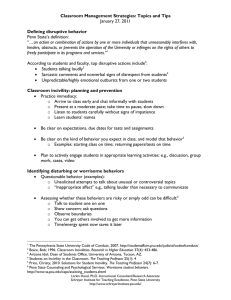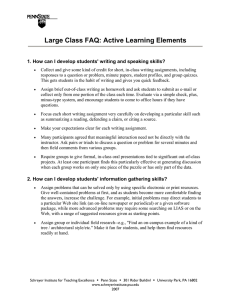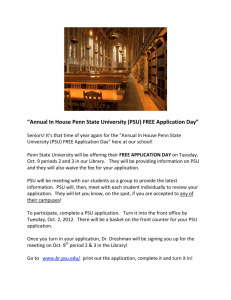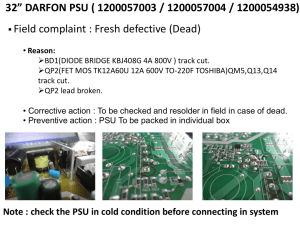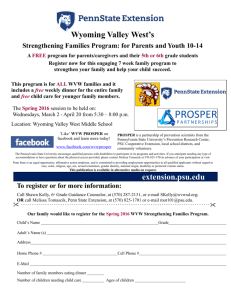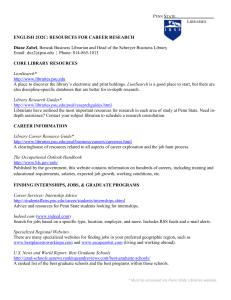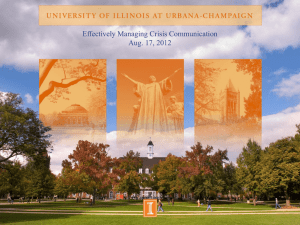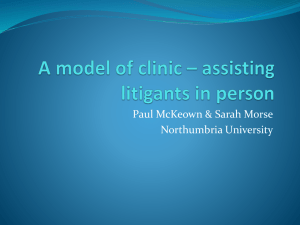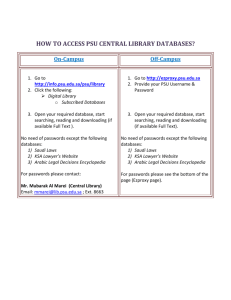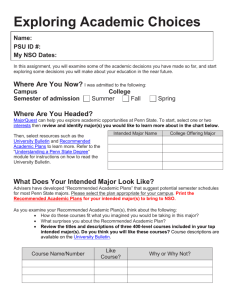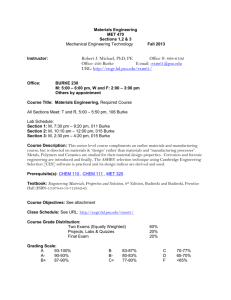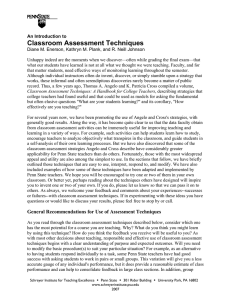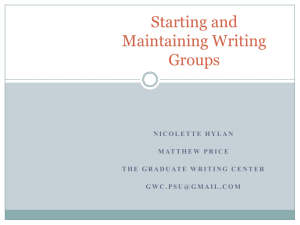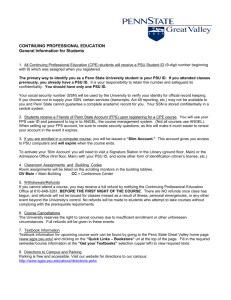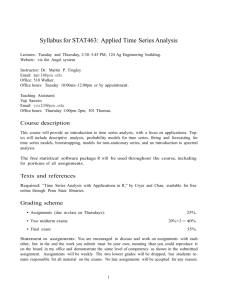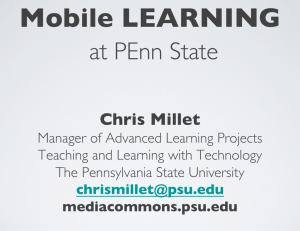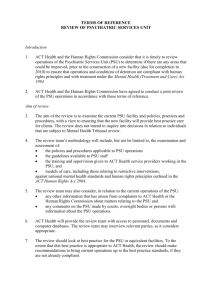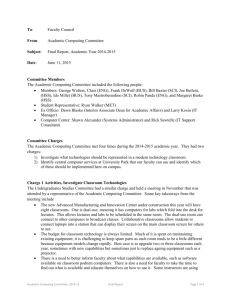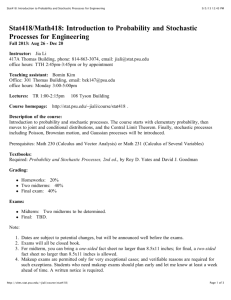Classroom Management Strategies: Topics and Tips
advertisement
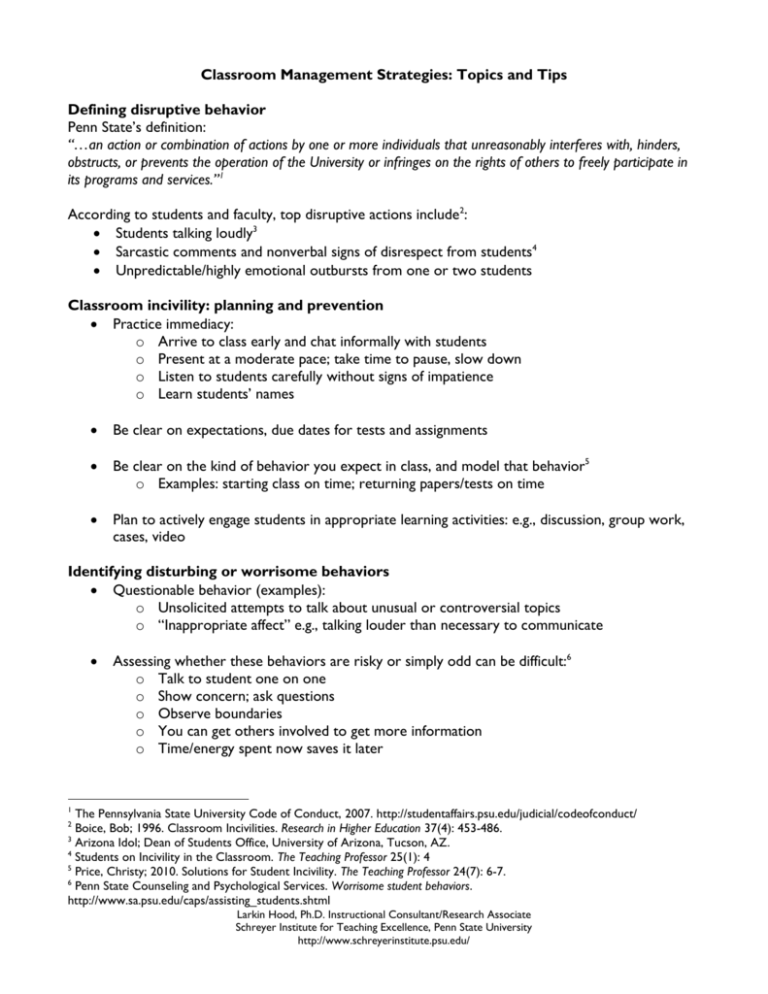
Classroom Management Strategies: Topics and Tips Defining disruptive behavior Penn State’s definition: “…an action or combination of actions by one or more individuals that unreasonably interferes with, hinders, obstructs, or prevents the operation of the University or infringes on the rights of others to freely participate in its programs and services.”1 According to students and faculty, top disruptive actions include2: Students talking loudly3 Sarcastic comments and nonverbal signs of disrespect from students4 Unpredictable/highly emotional outbursts from one or two students Classroom incivility: planning and prevention Practice immediacy: o Arrive to class early and chat informally with students o Present at a moderate pace; take time to pause, slow down o Listen to students carefully without signs of impatience o Learn students’ names Be clear on expectations, due dates for tests and assignments Be clear on the kind of behavior you expect in class, and model that behavior5 o Examples: starting class on time; returning papers/tests on time Plan to actively engage students in appropriate learning activities: e.g., discussion, group work, cases, video Identifying disturbing or worrisome behaviors Questionable behavior (examples): o Unsolicited attempts to talk about unusual or controversial topics o “Inappropriate affect” e.g., talking louder than necessary to communicate Assessing whether these behaviors are risky or simply odd can be difficult:6 o Talk to student one on one o Show concern; ask questions o Observe boundaries o You can get others involved to get more information o Time/energy spent now saves it later 1 The Pennsylvania State University Code of Conduct, 2007. http://studentaffairs.psu.edu/judicial/codeofconduct/ Boice, Bob; 1996. Classroom Incivilities. Research in Higher Education 37(4): 453-486. 3 Arizona Idol; Dean of Students Office, University of Arizona, Tucson, AZ. 4 Students on Incivility in the Classroom. The Teaching Professor 25(1): 4 5 Price, Christy; 2010. Solutions for Student Incivility. The Teaching Professor 24(7): 6-7. 6 Penn State Counseling and Psychological Services. Worrisome student behaviors. http://www.sa.psu.edu/caps/assisting_students.shtml 2 Larkin Hood, Ph.D. Instructional Consultant/Research Associate Schreyer Institute for Teaching Excellence, Penn State University http://www.schreyerinstitute.psu.edu/ What would you do? It’s a typical day in your class. As you lecture: A student strolls in 10 minutes late, the earliest arrival for the student all semester Several are absorbed in the newspaper Two students are talking to each other and laughing One has head back, eyes closed, and mouth open A cell phone rings What might you do about all this? For some recommendations, go to http://www4.ncsu.edu/unity/lockers/users/f/felder/public/Columns/Dayswork.html Resources PSU guidelines and procedures on disruptive behavior: http://studentaffairs.psu.edu/judicial/classdisrupt.shtml Recognizing and addressing worrisome student behaviors: http://www.sa.psu.edu/caps/assisting_students.shtml http://www.psu.edu/oue/disruptions.pdf More tips on managing hot moments in the classroom: http://isites.harvard.edu/fs/html/icb.topic58474/hotmoments.html Larkin Hood, Ph.D. Instructional Consultant/Research Associate Schreyer Institute for Teaching Excellence, Penn State University http://www.schreyerinstitute.psu.edu/
